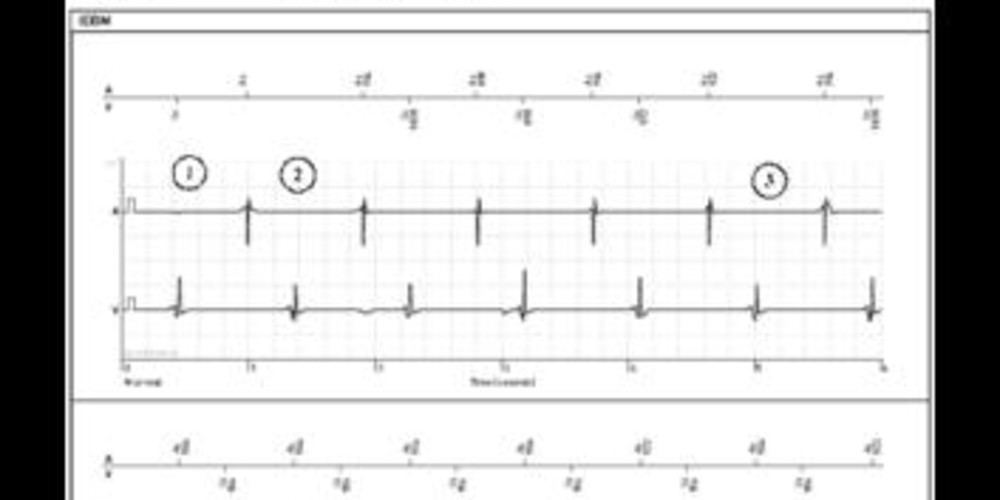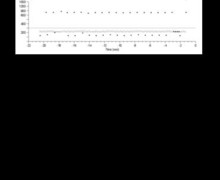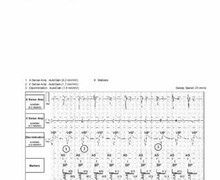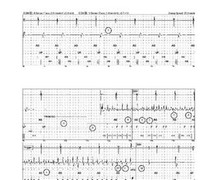Ventricular sensing failure
Tracing
Manufacturer Biotronik
Device PM
Field Sensing
N° 23
Patient
54-year-old man, implanted with an Evia DR pacemaker for atrial disease; recording of a periodic EGM.

Graph and trace
- atrial sensing and ventricular sensing;
- ventricular sensing failure; operation in Vp suppression mode, no switching to DDD mode following a single blocked P wave;
- second undersensed ventricular event;
- no switching to DDD mode, the switching criterion having not been reached (3 blocked P waves out of 8).
Other articles that may be of interest to you







This tracing also reveals one of the limitations of automatic sensing on BiotronikTM pacemakers. The maximum sensitivity value (2 mV) is not programmable and is not adjusted when ventricular events are of small amplitude, as in this patient (between 1.5 and 2.5 mV). It may therefore be necessary to program a fixed sensitivity with a higher sensitivity level (programmed sensitivity fixed at 1 mV for example). The recording of a periodic EGM can enable the diagnosis of dysfunctions that are not identifiable by the pacemaker such as an undersensing problem. The proper functioning of the various algorithms for preserving spontaneous conduction requires good quality atrial and ventricular sensing. This patient presented numerous inappropriate switching episodes related to this ventricular undersensing problem (false diagnosis of second-degree AV block, third-degree AV block or ventricular pause).